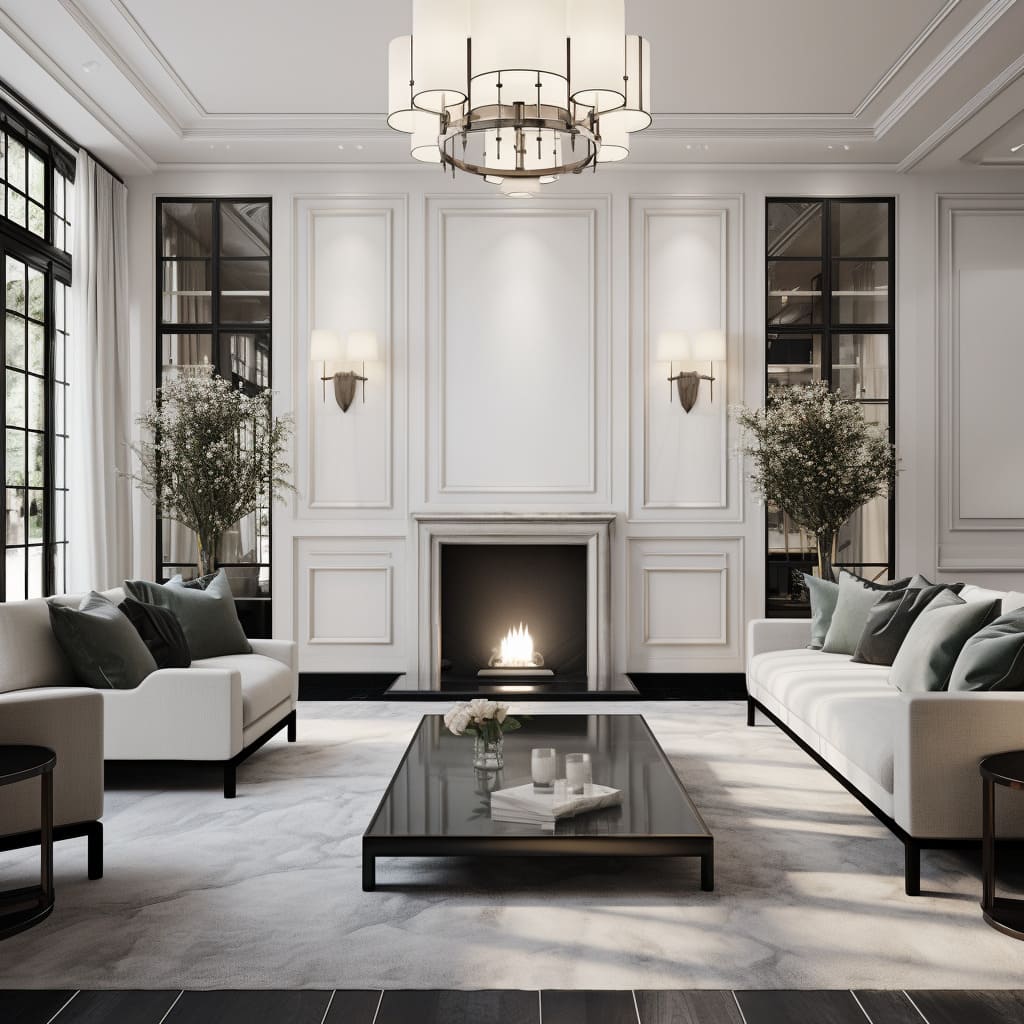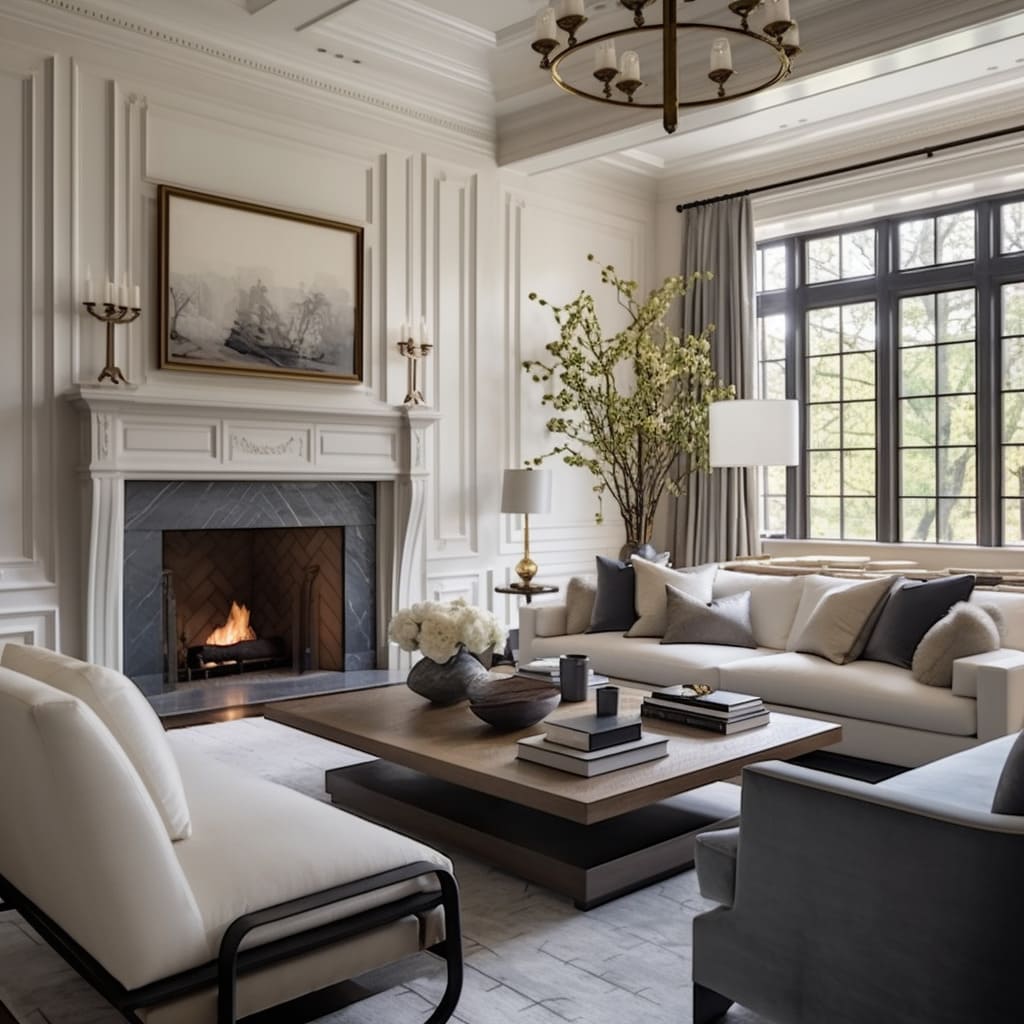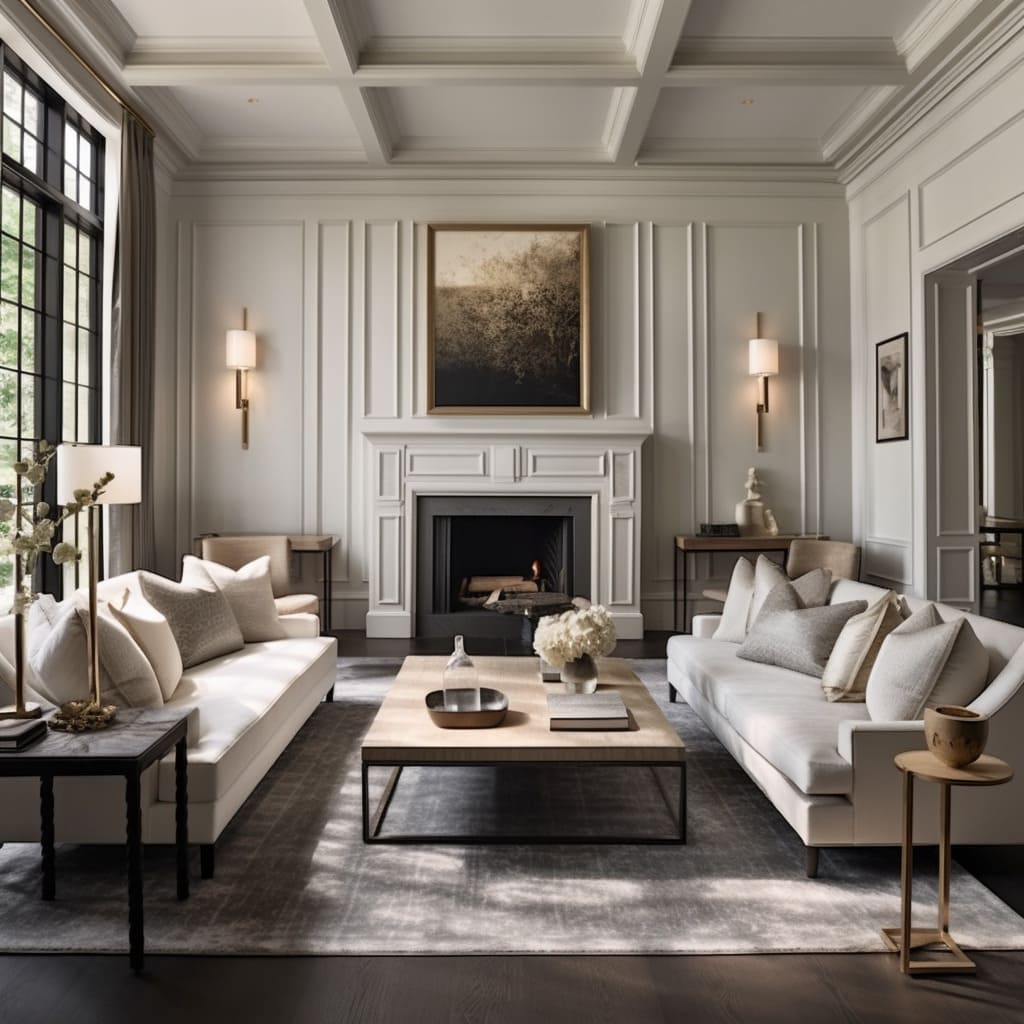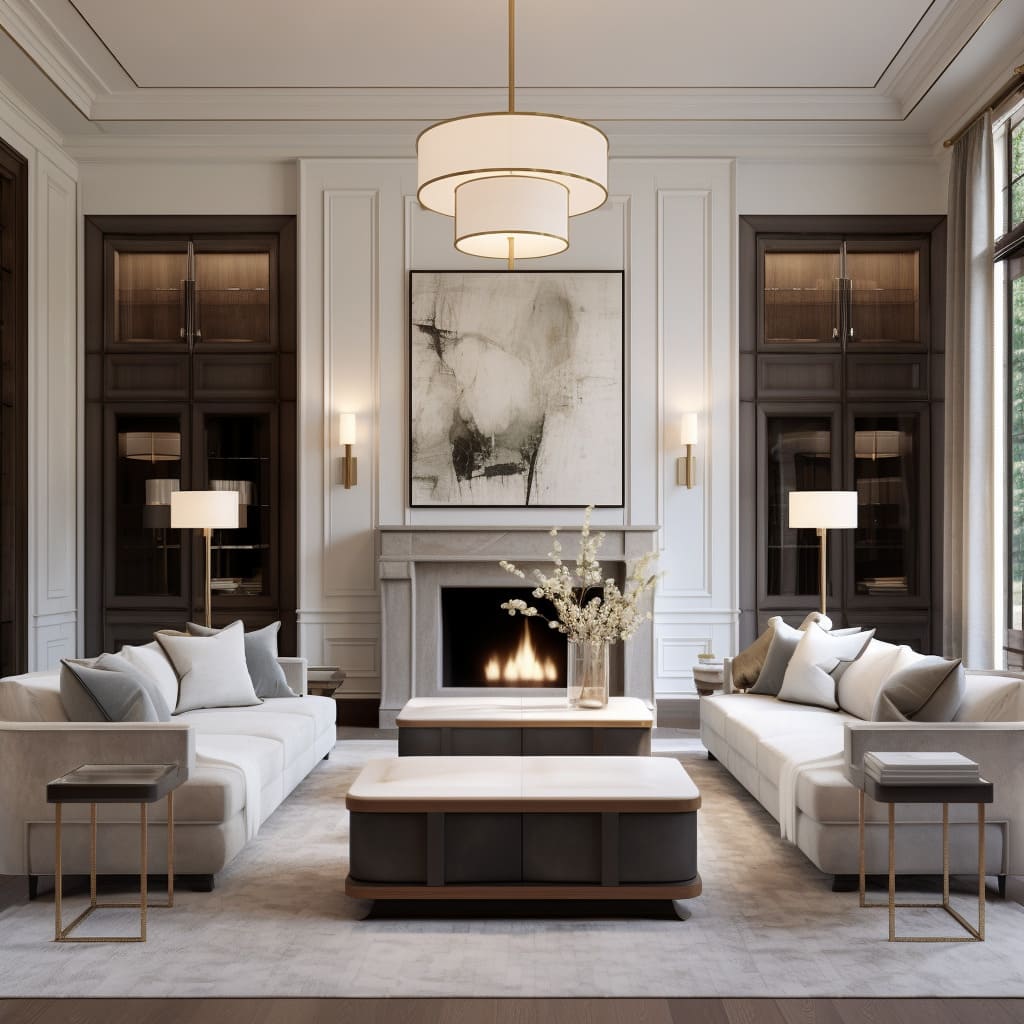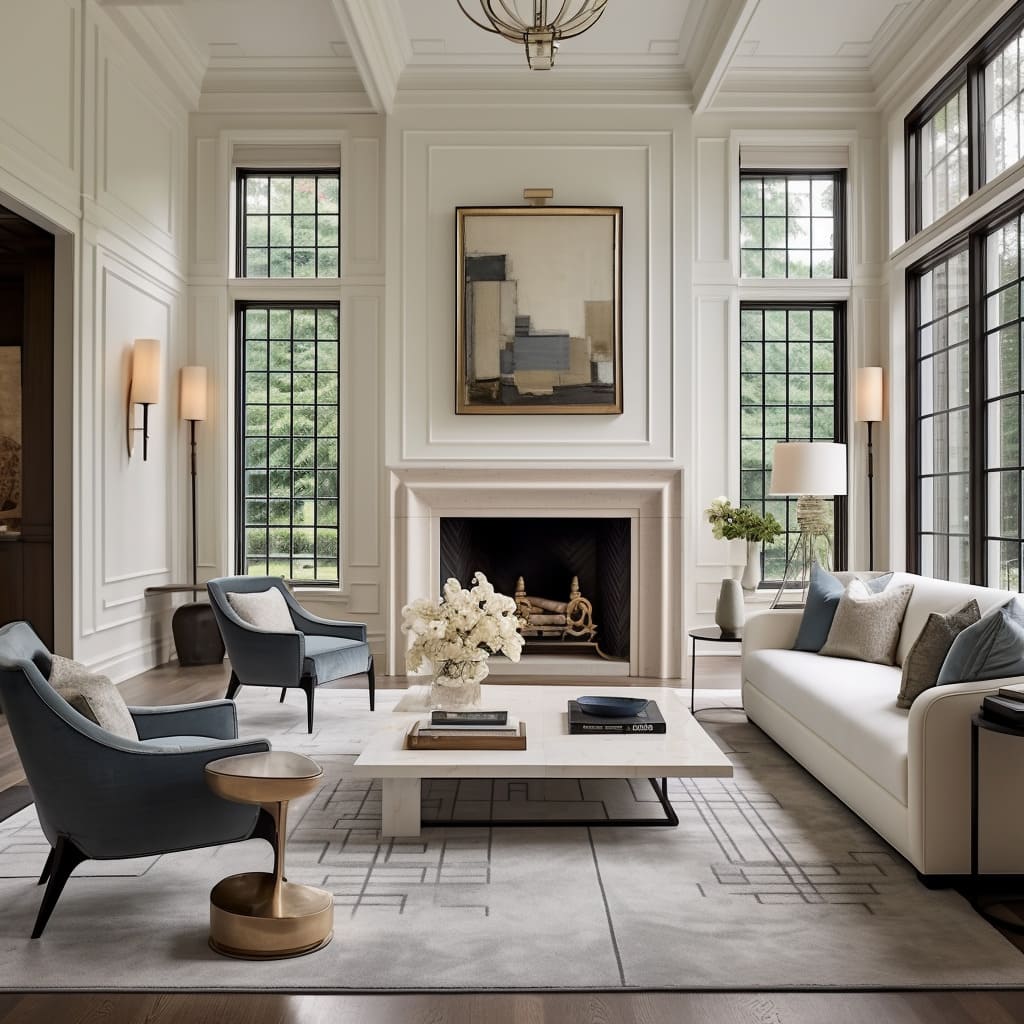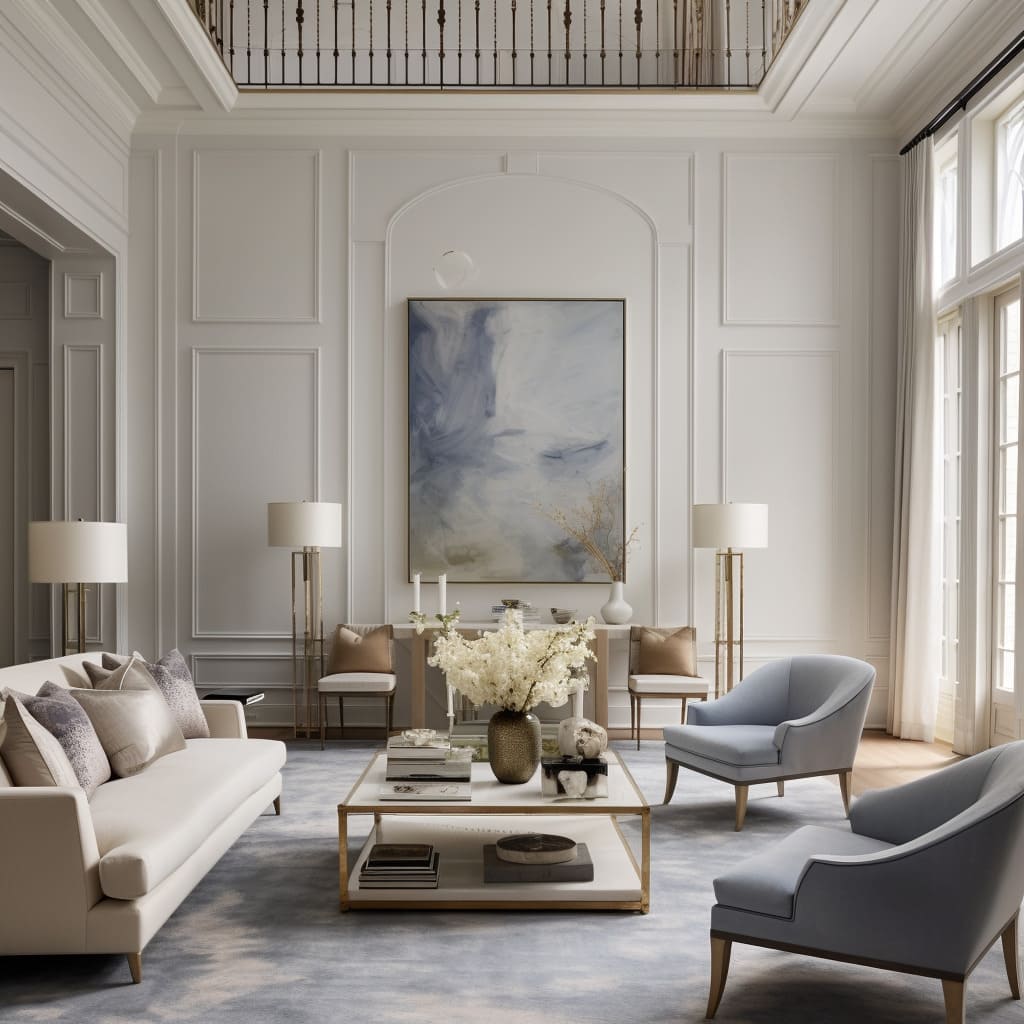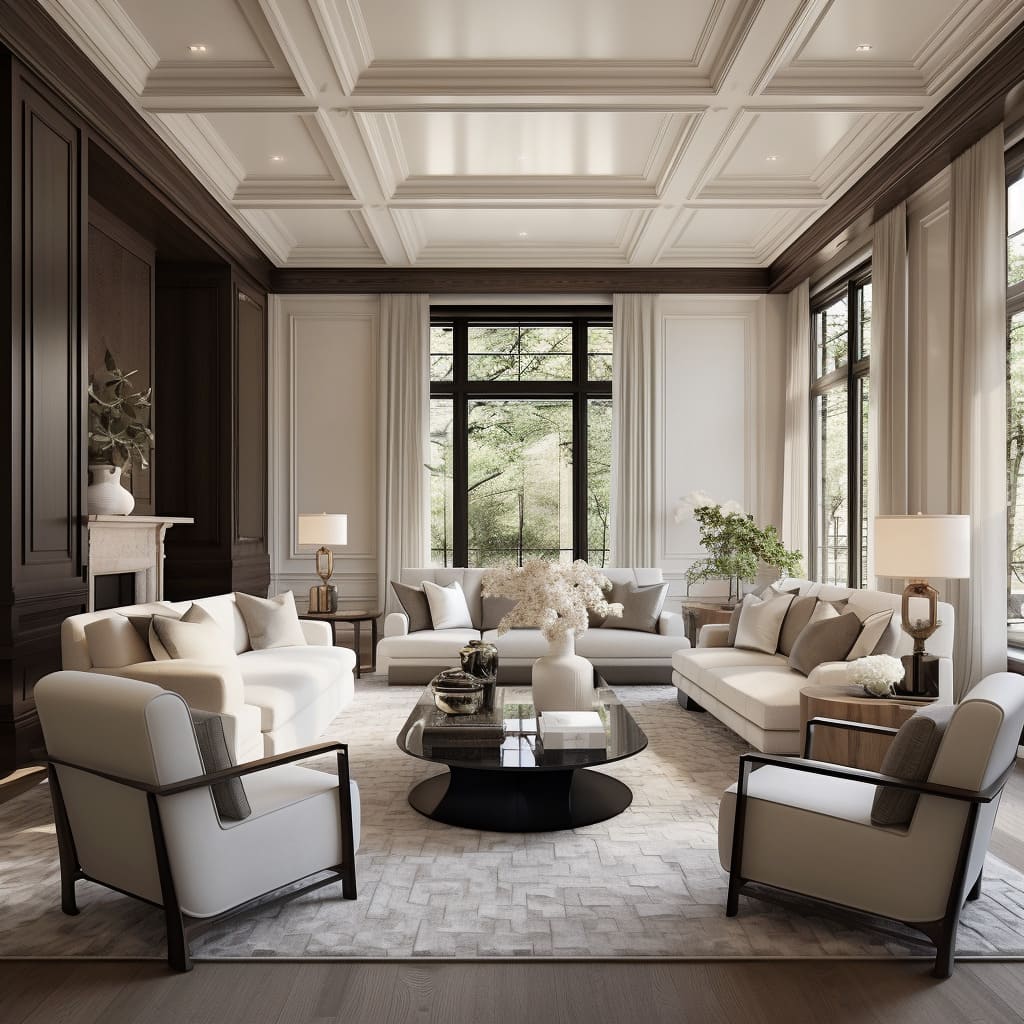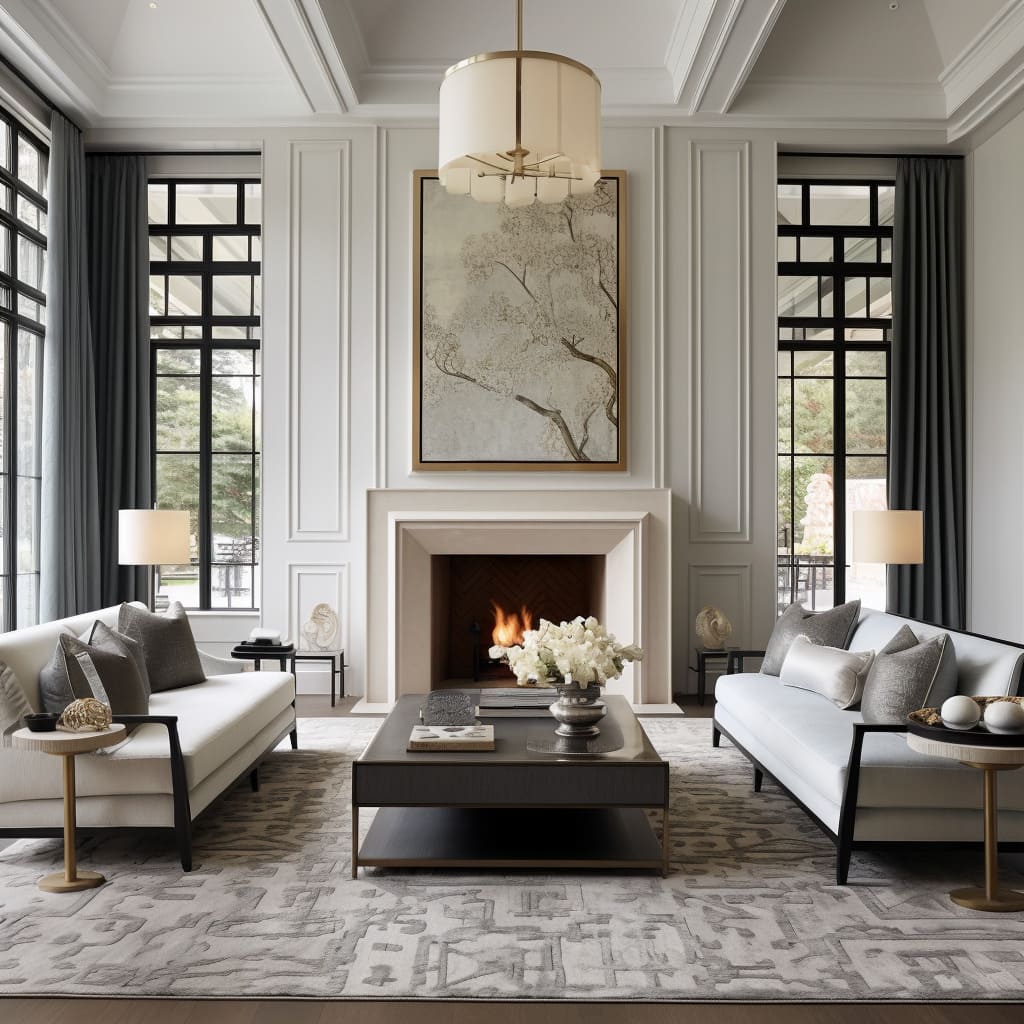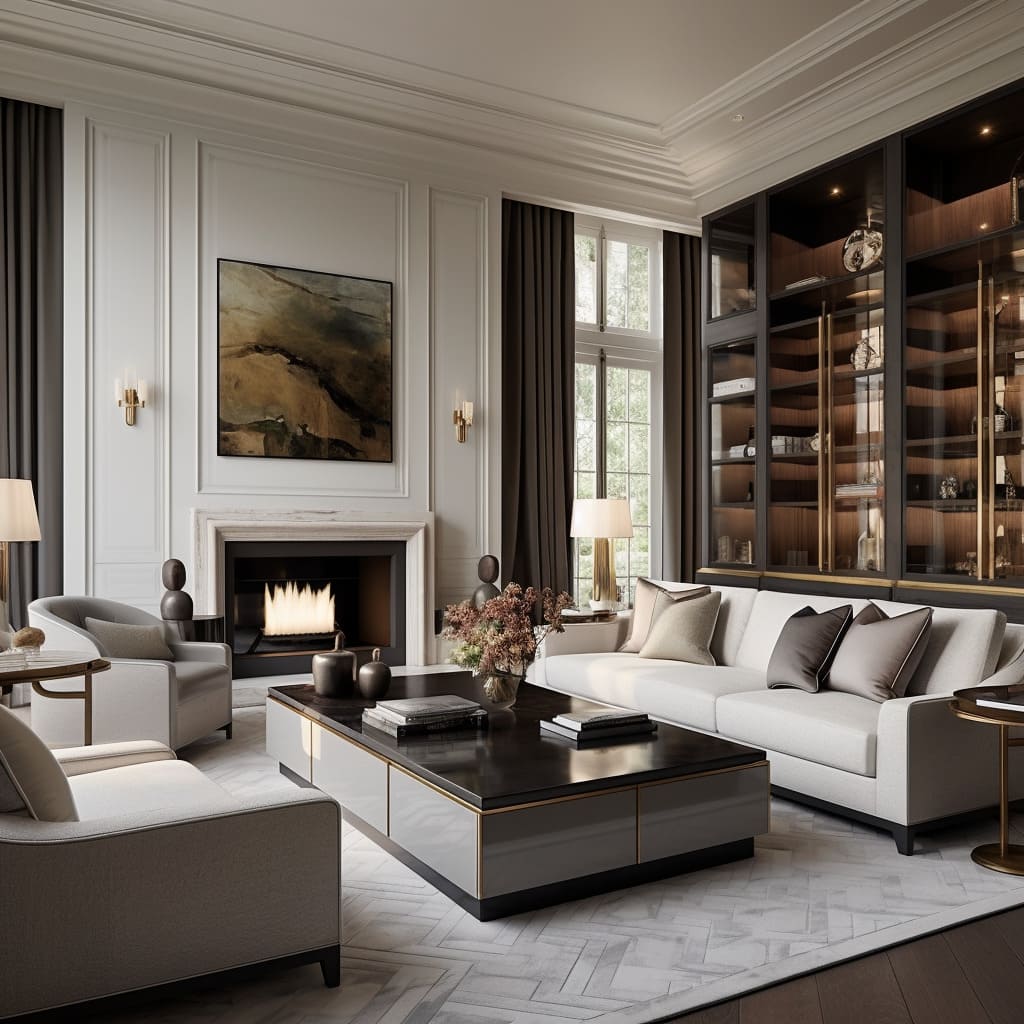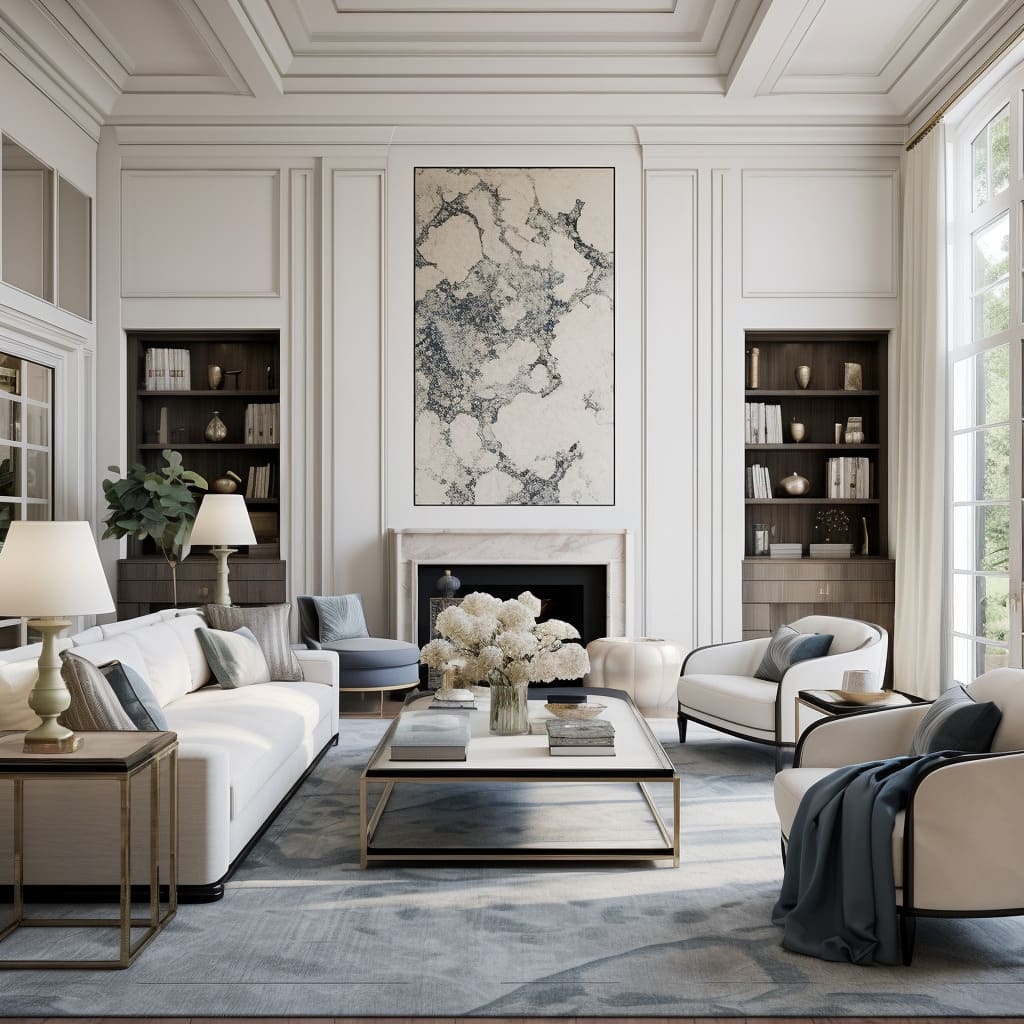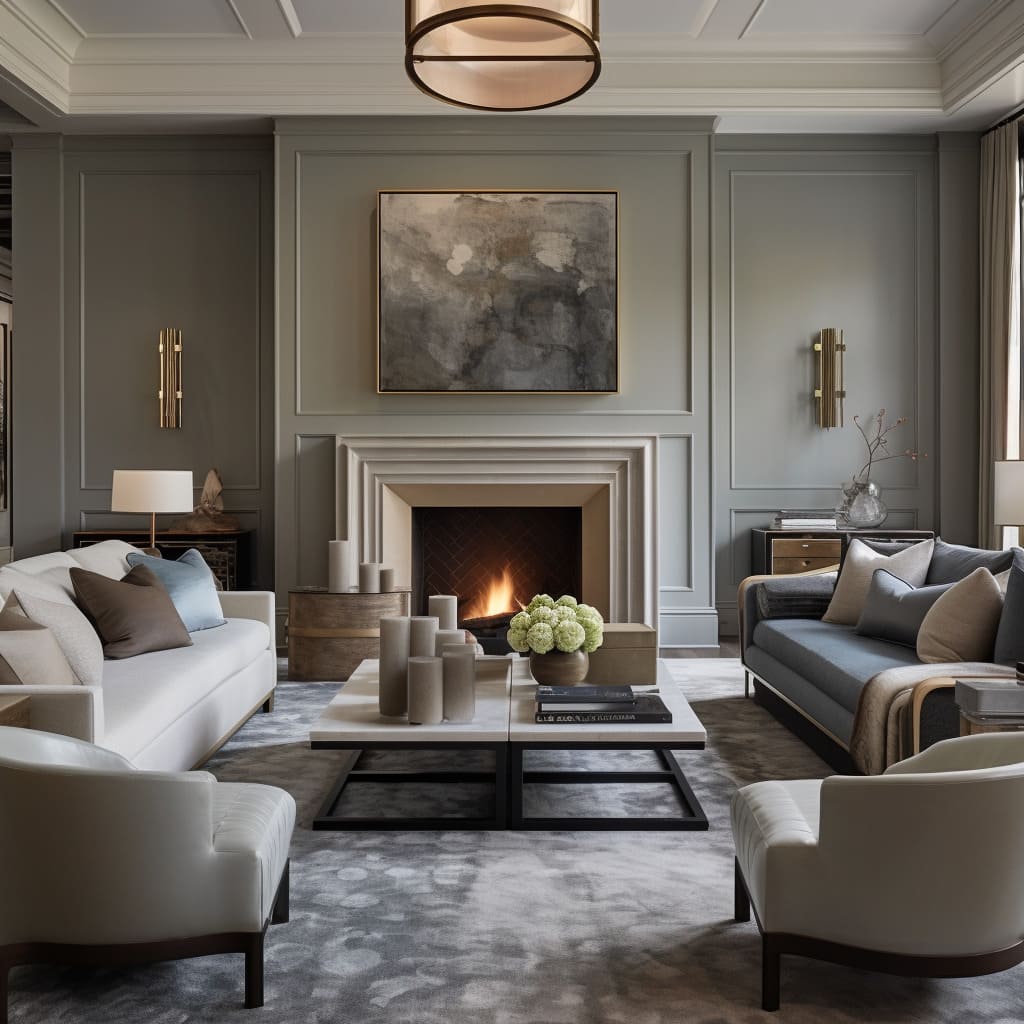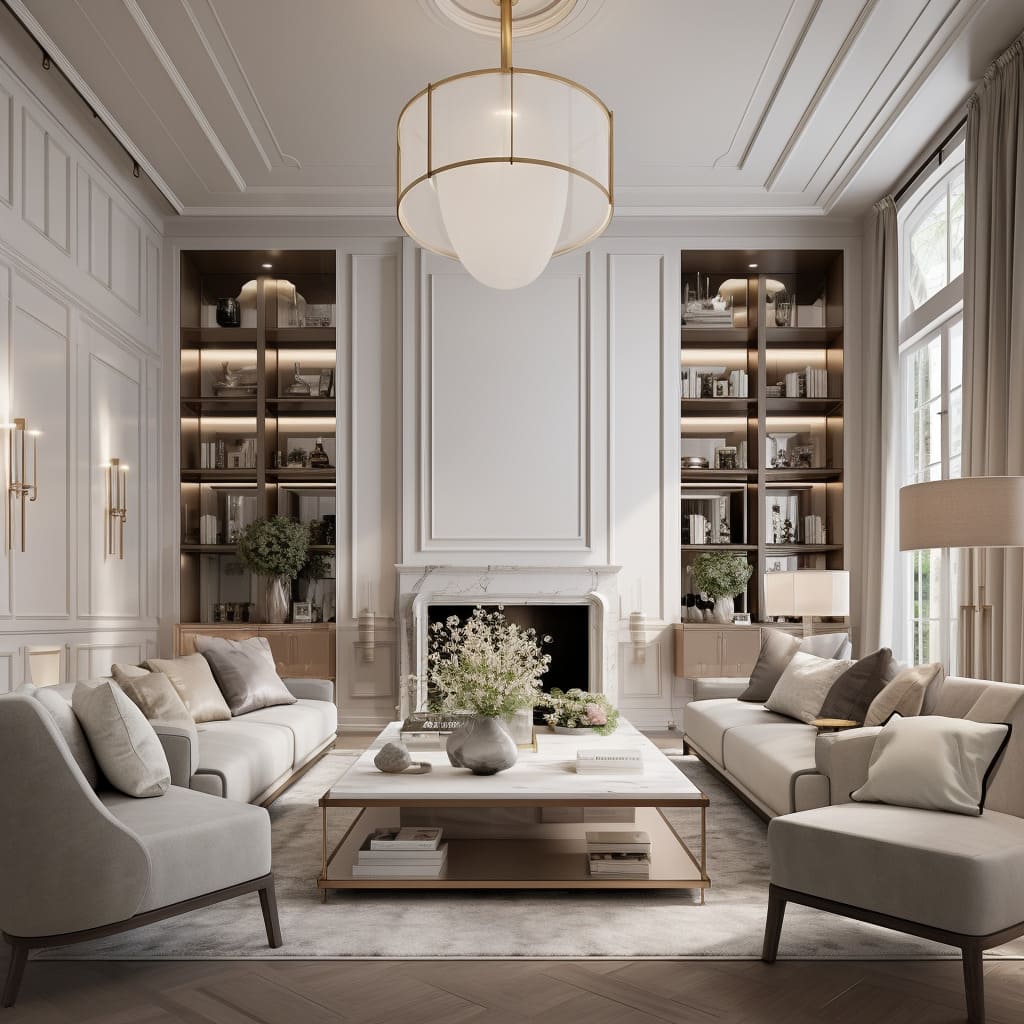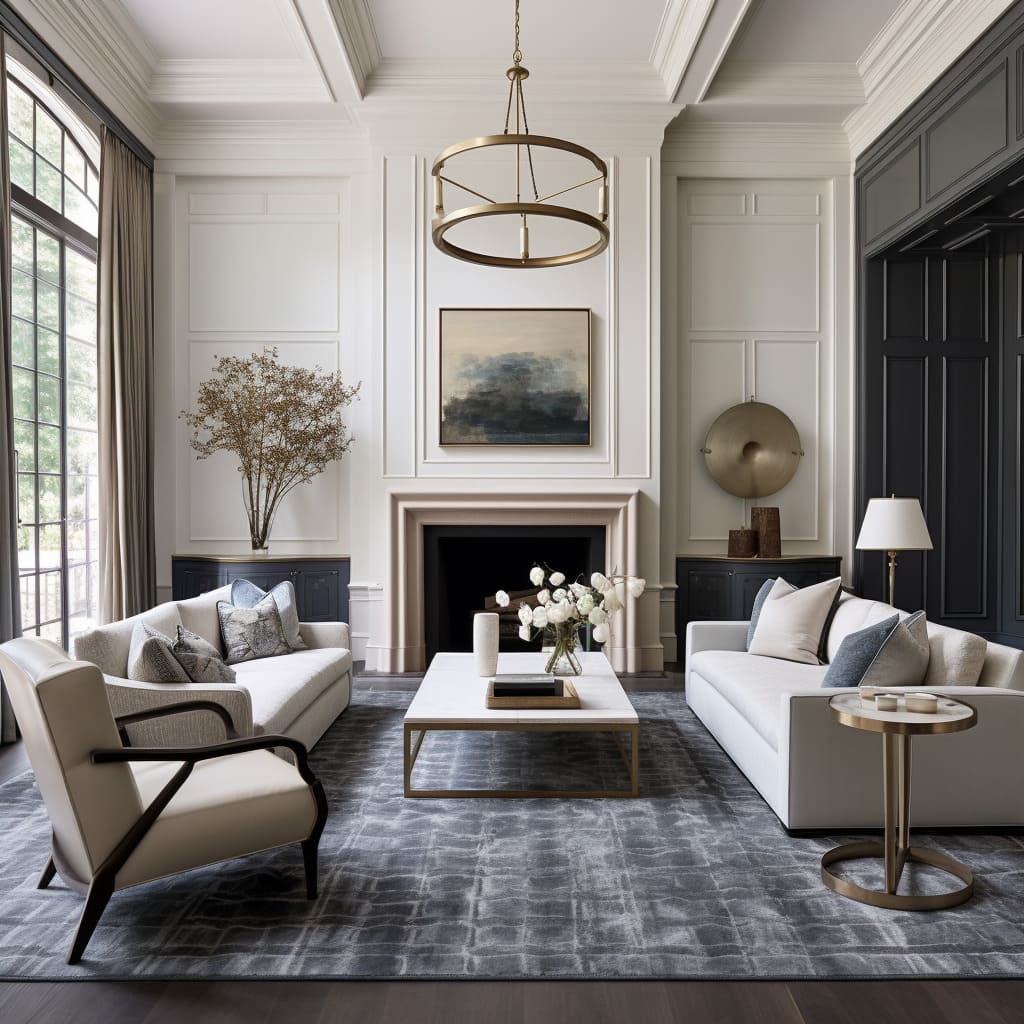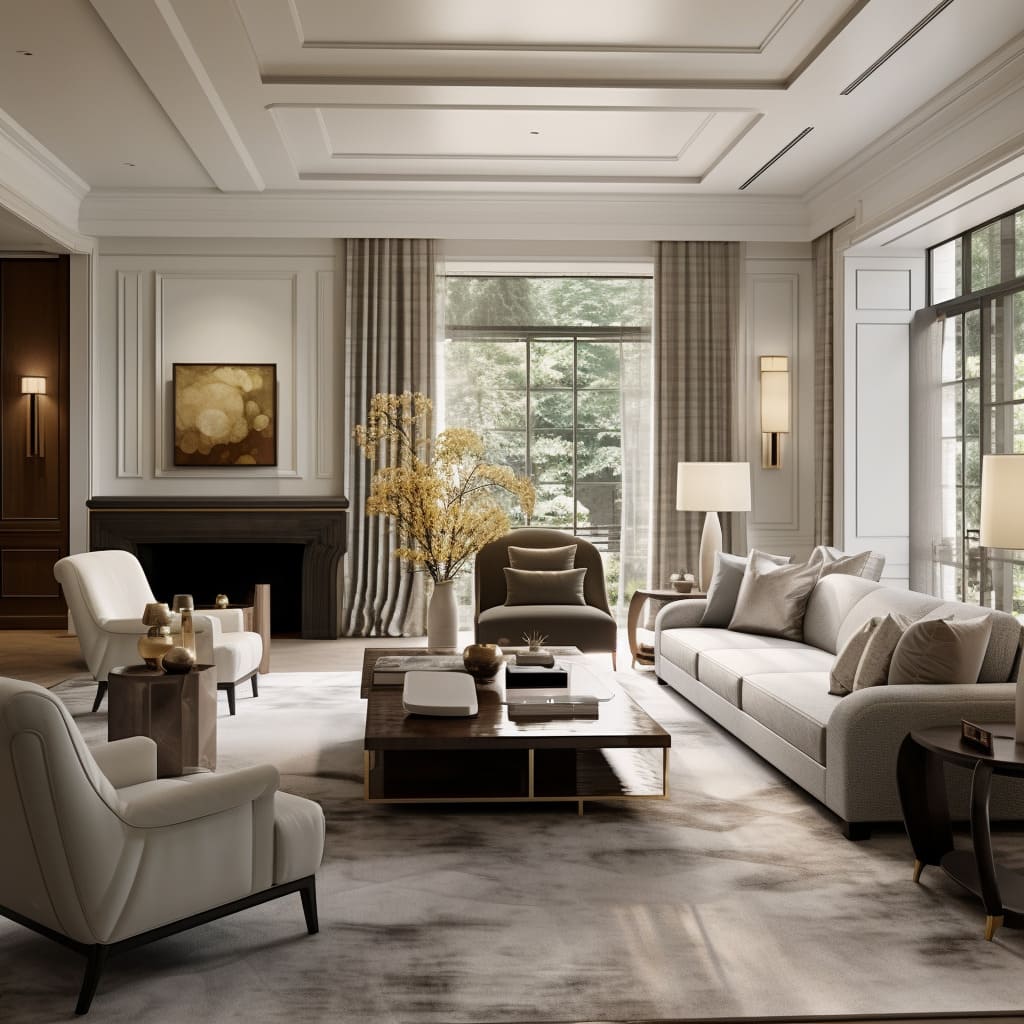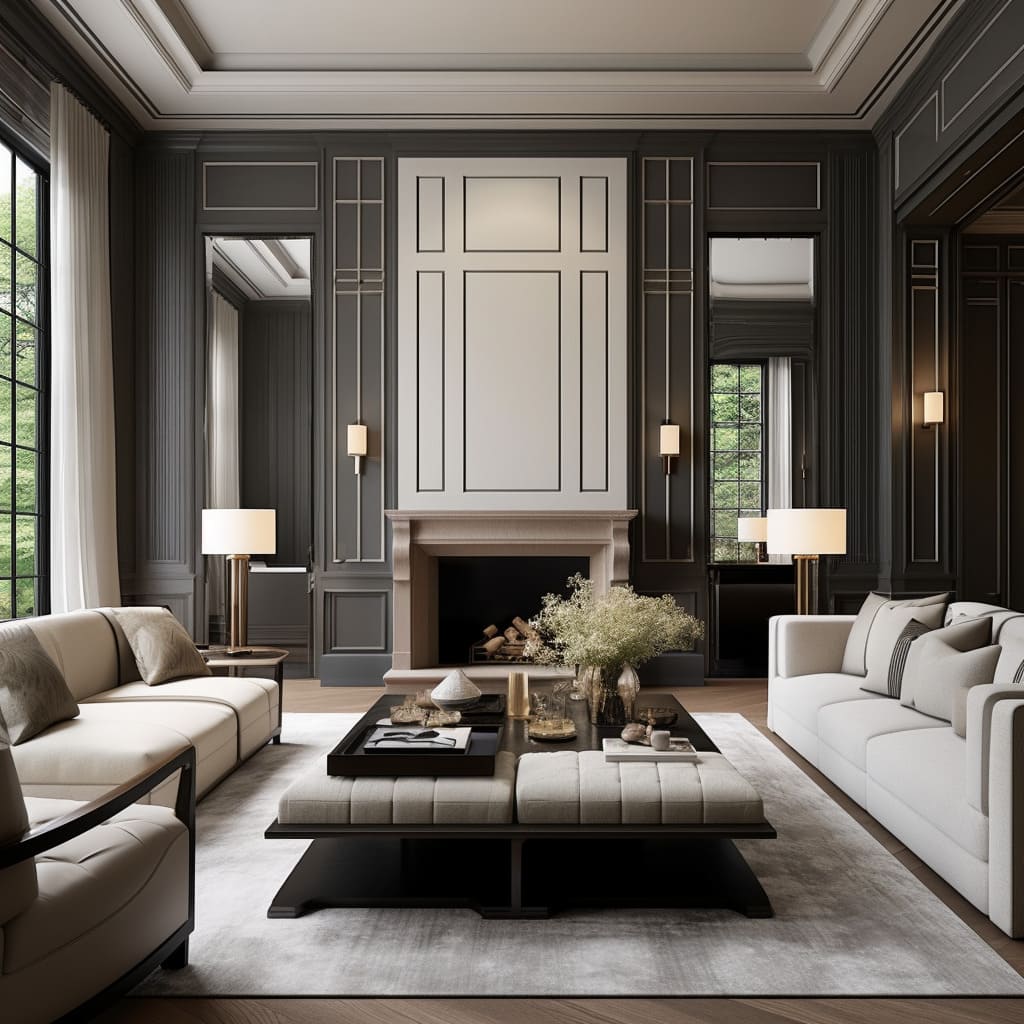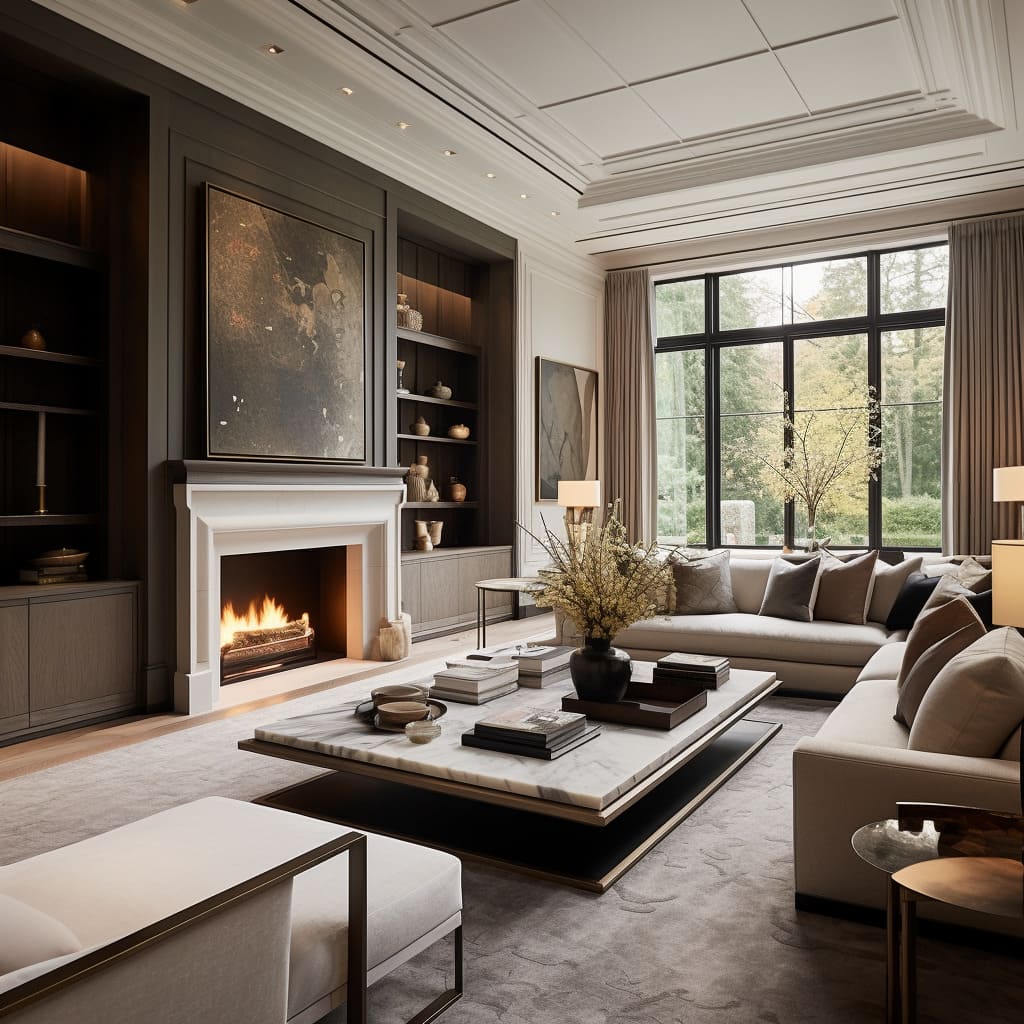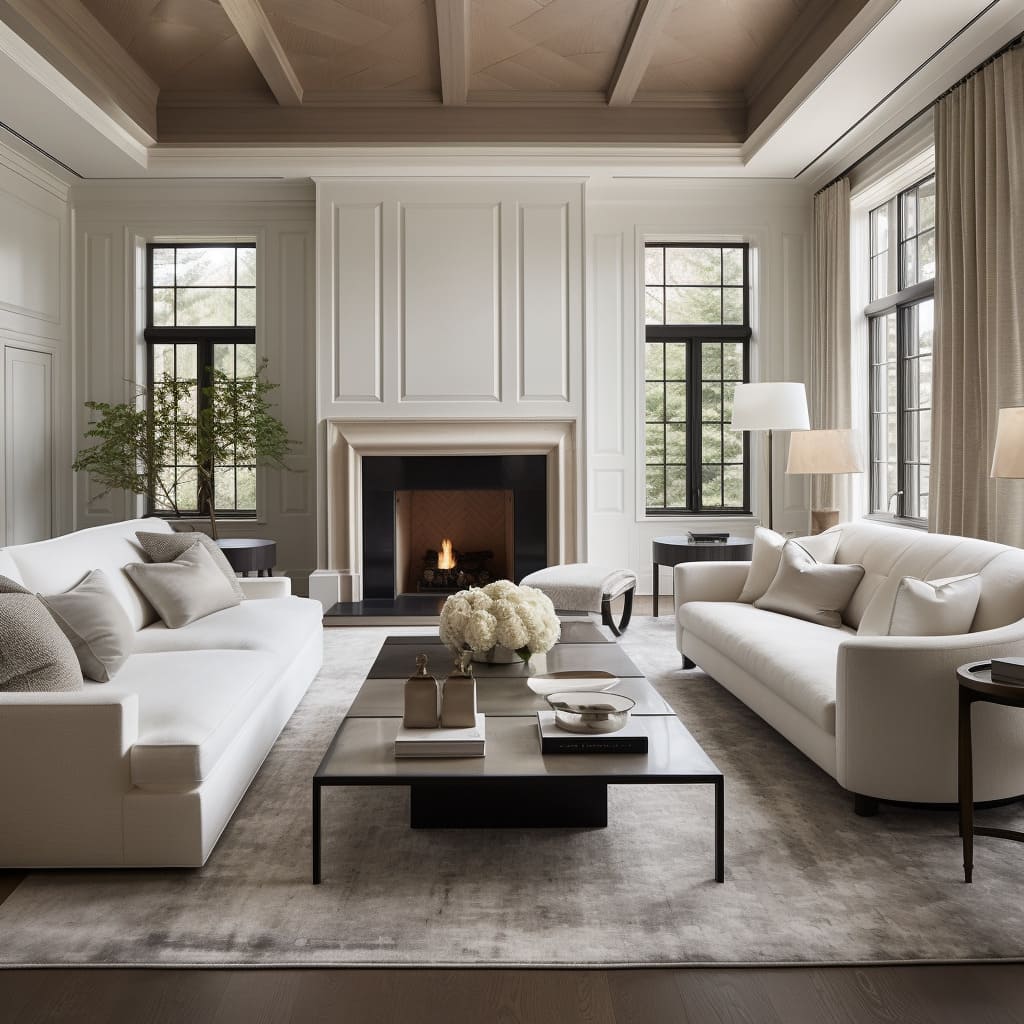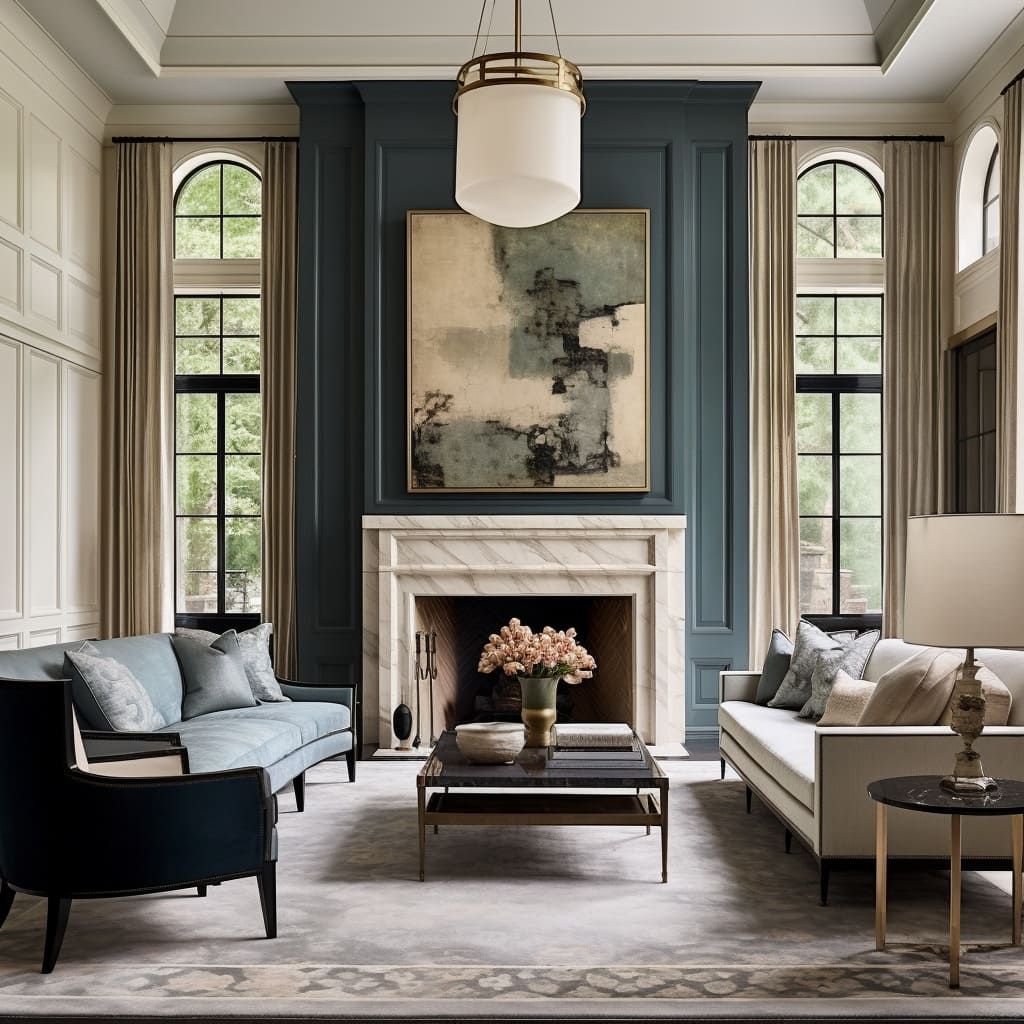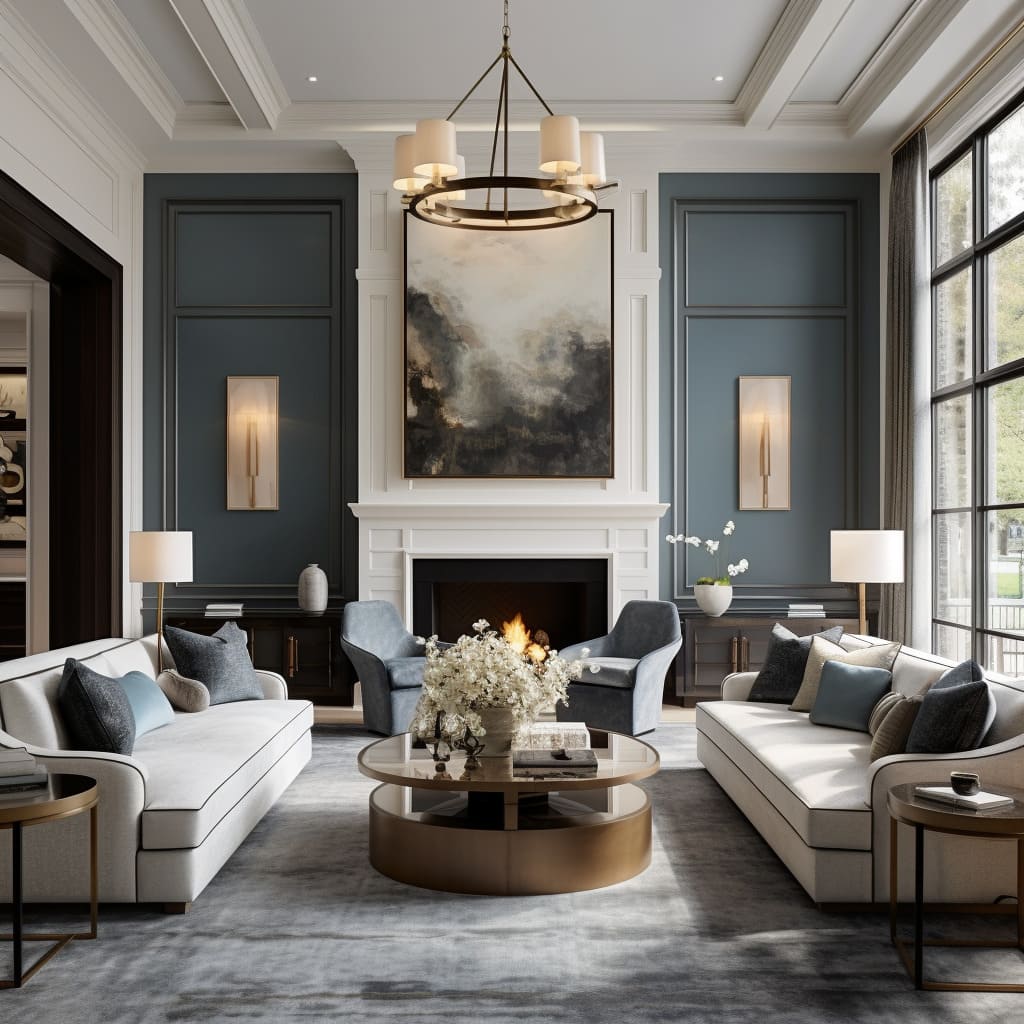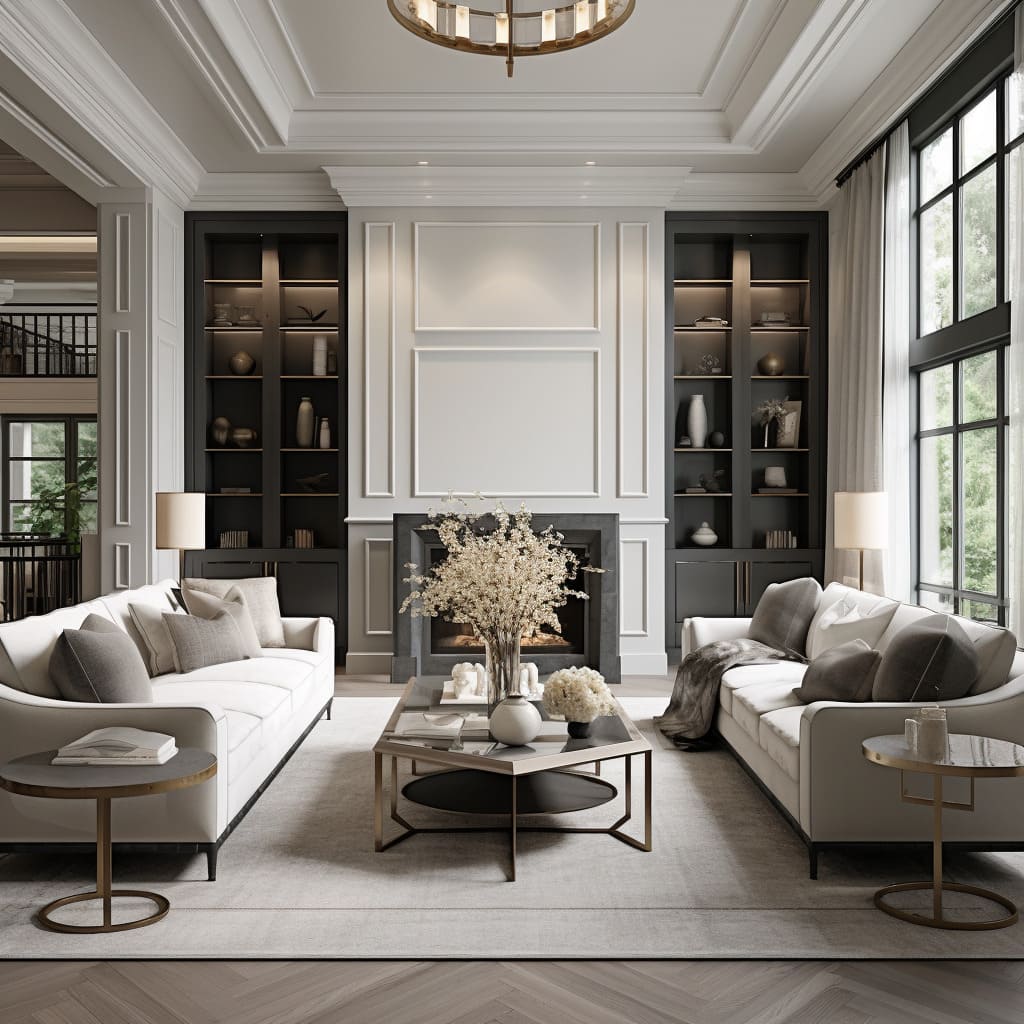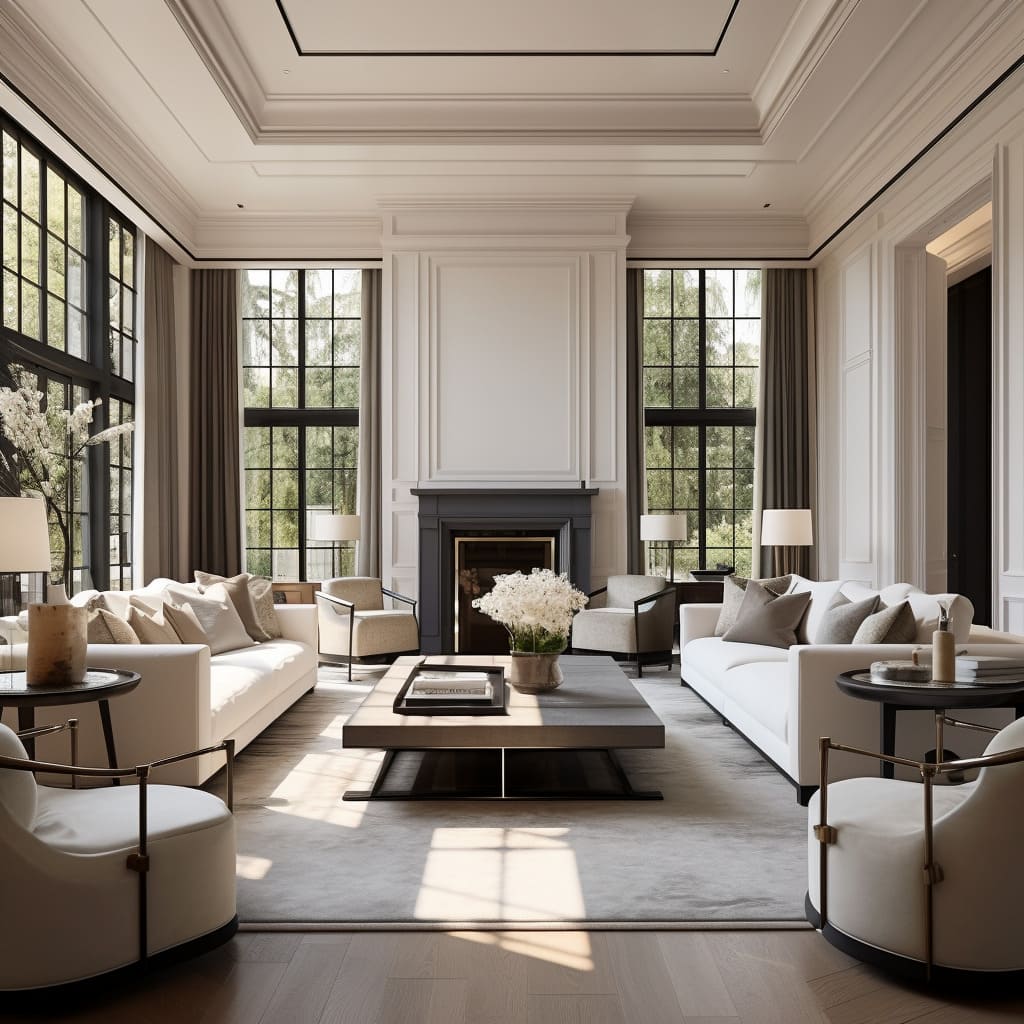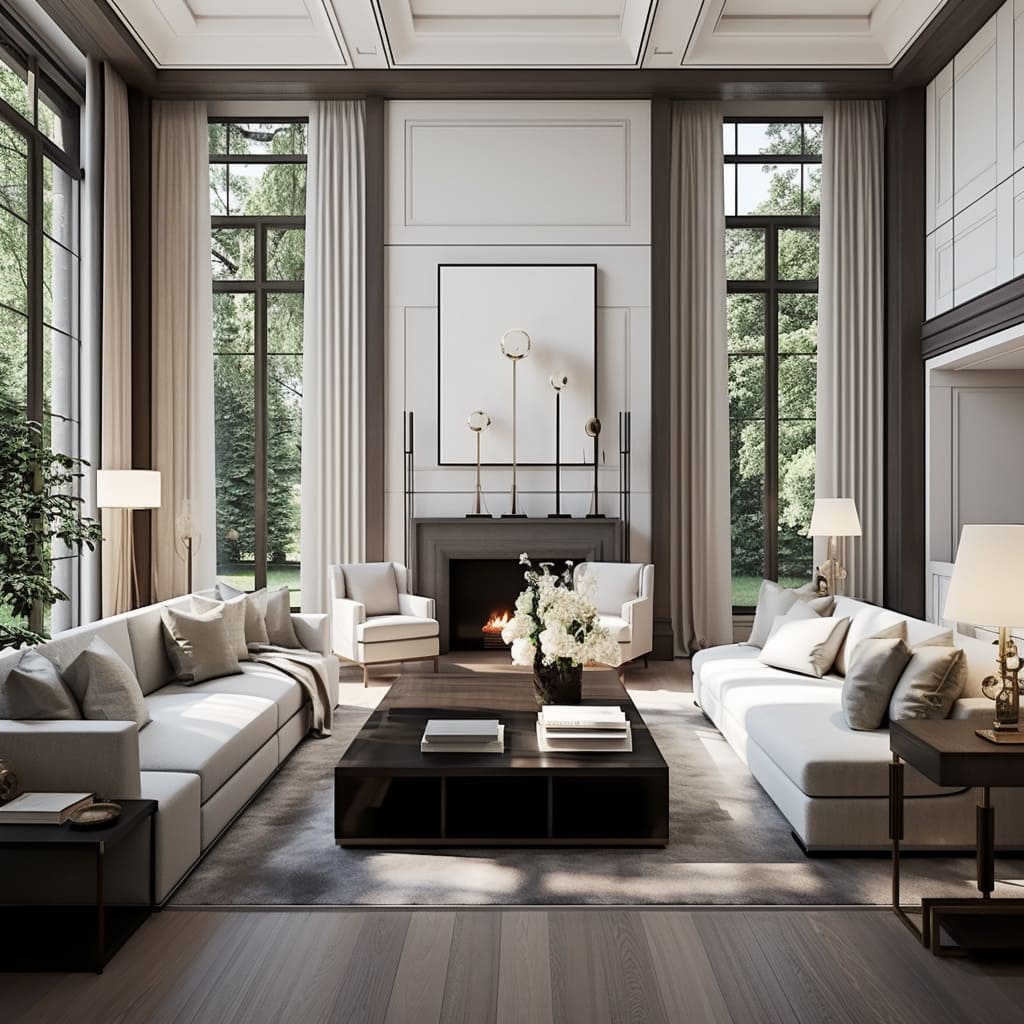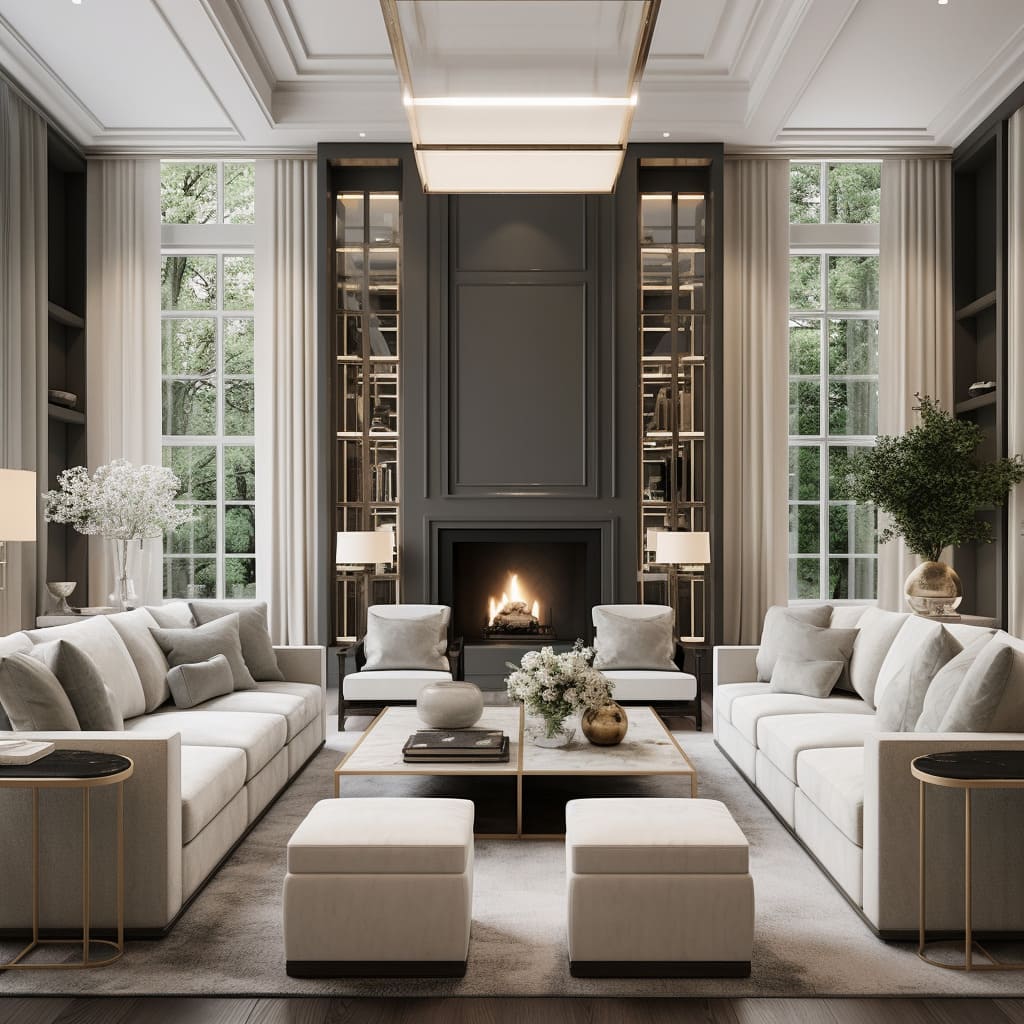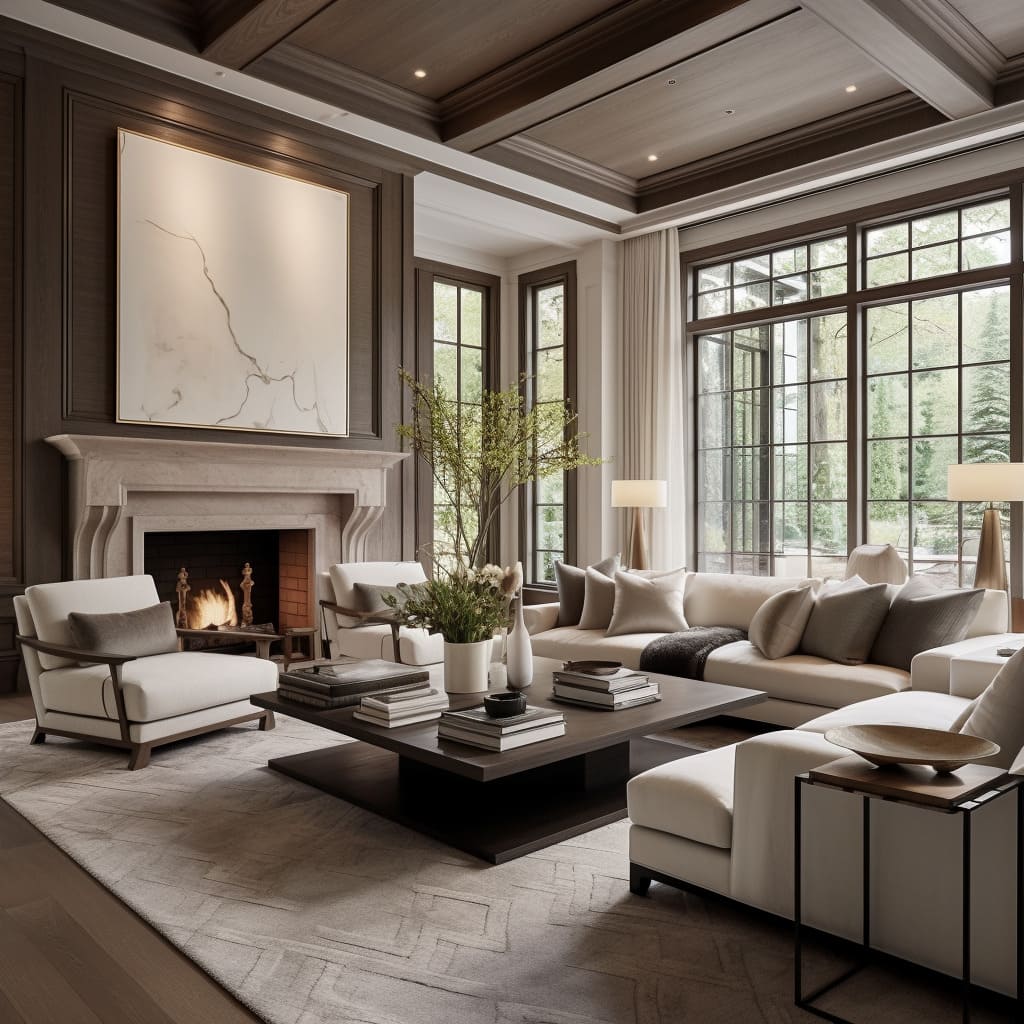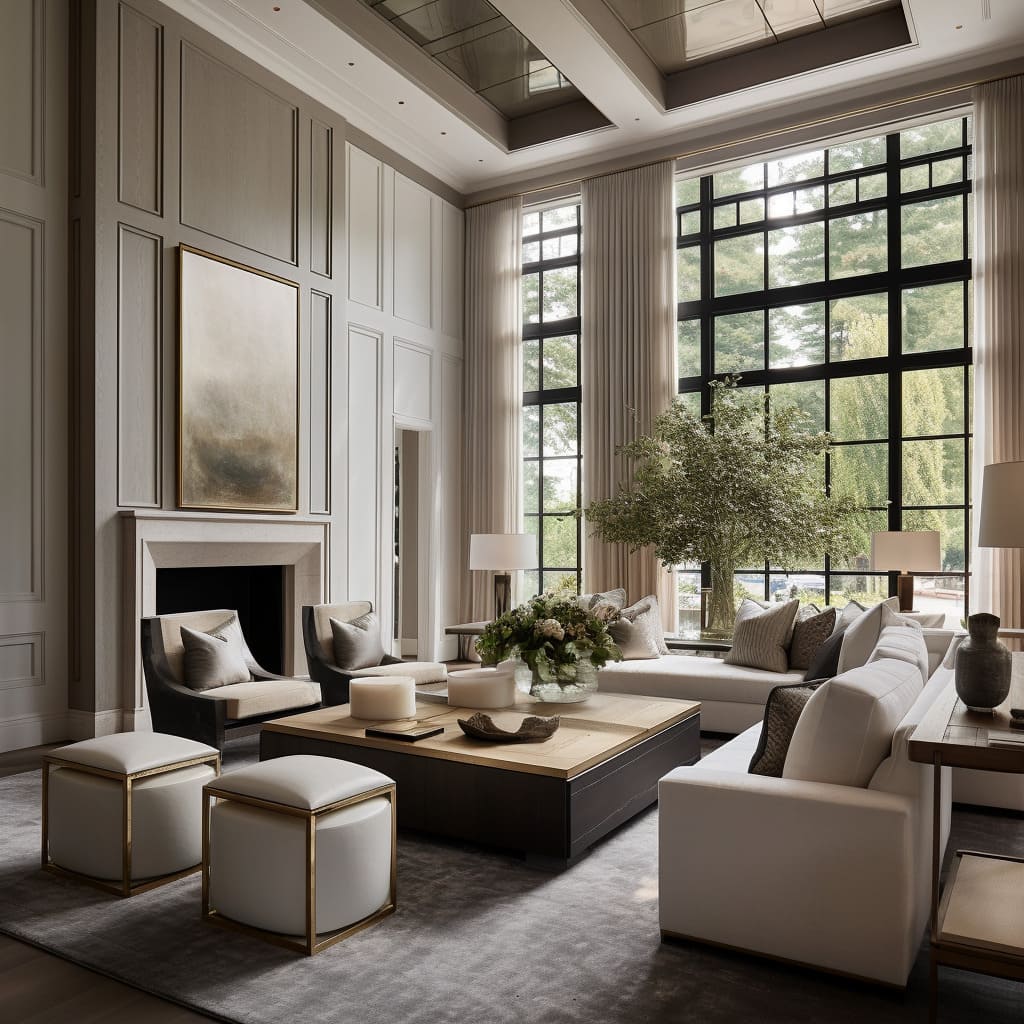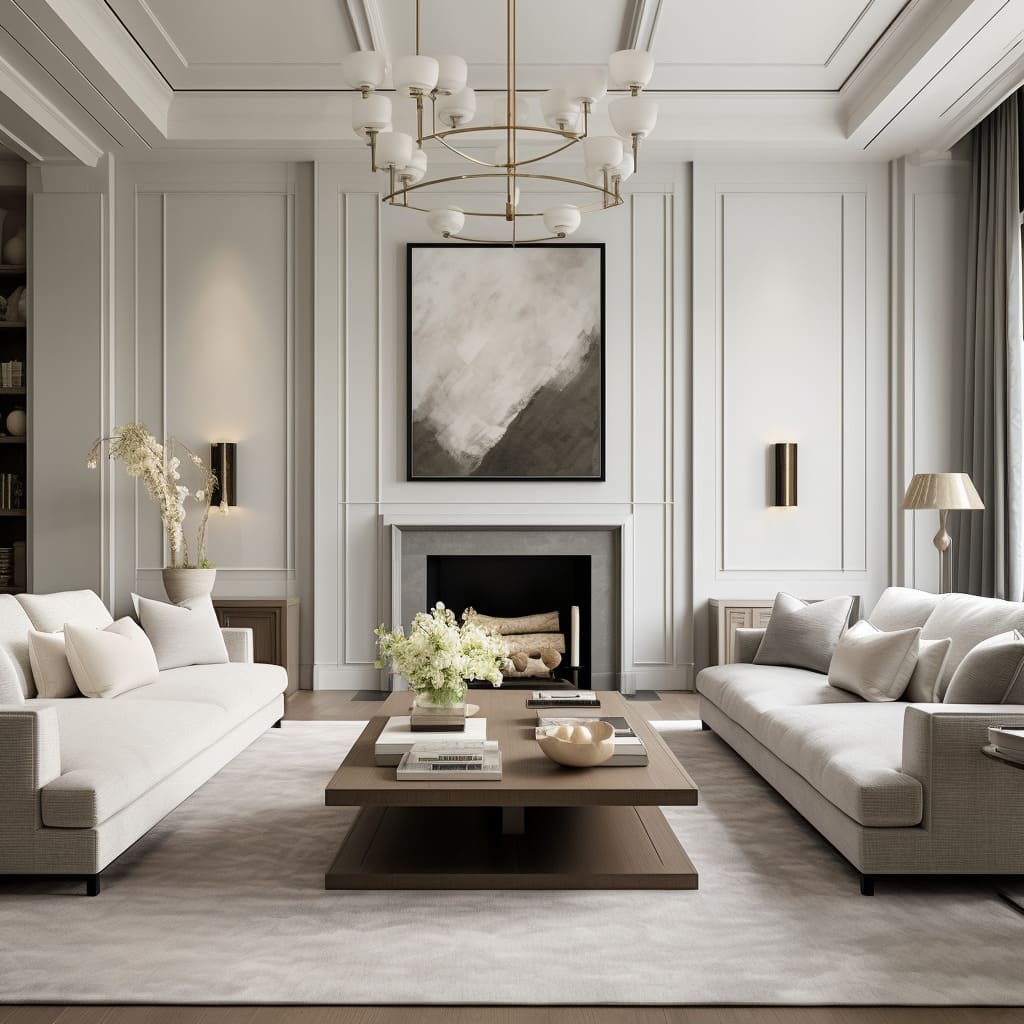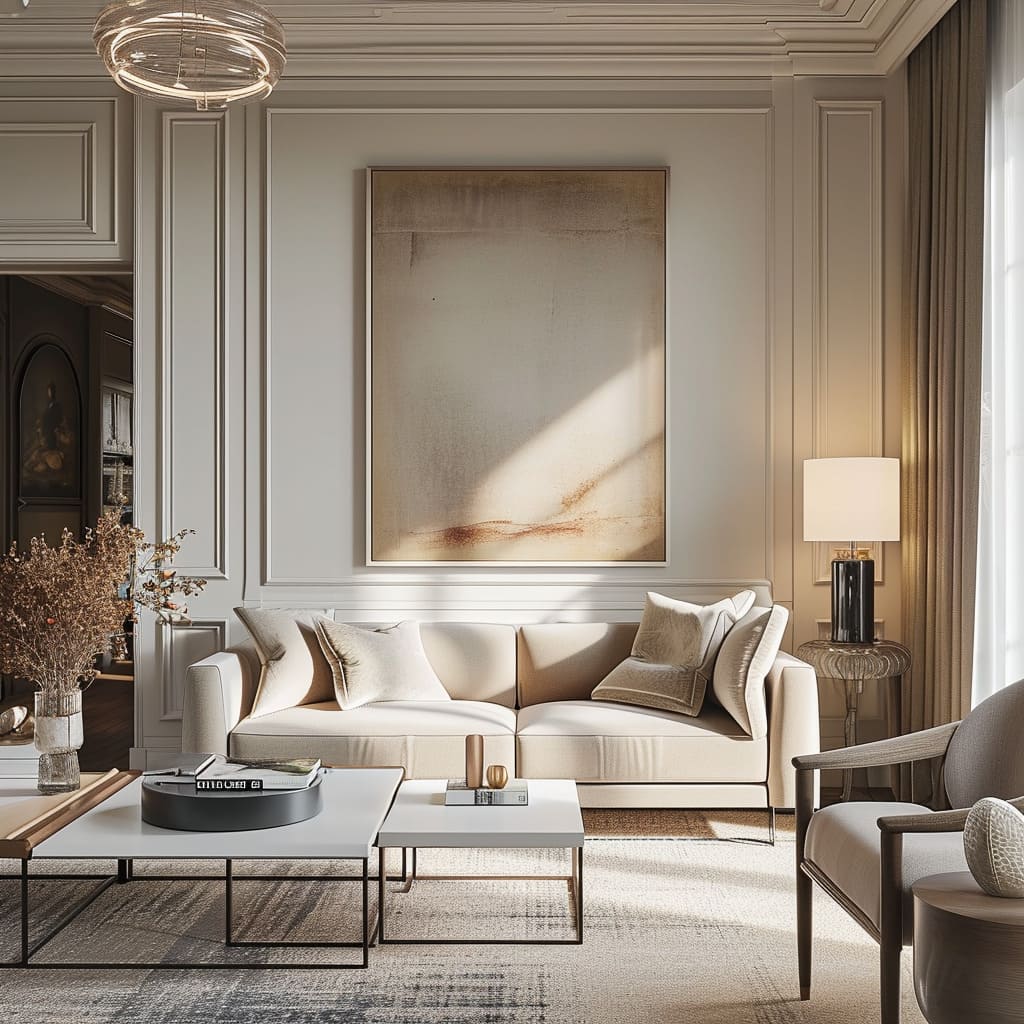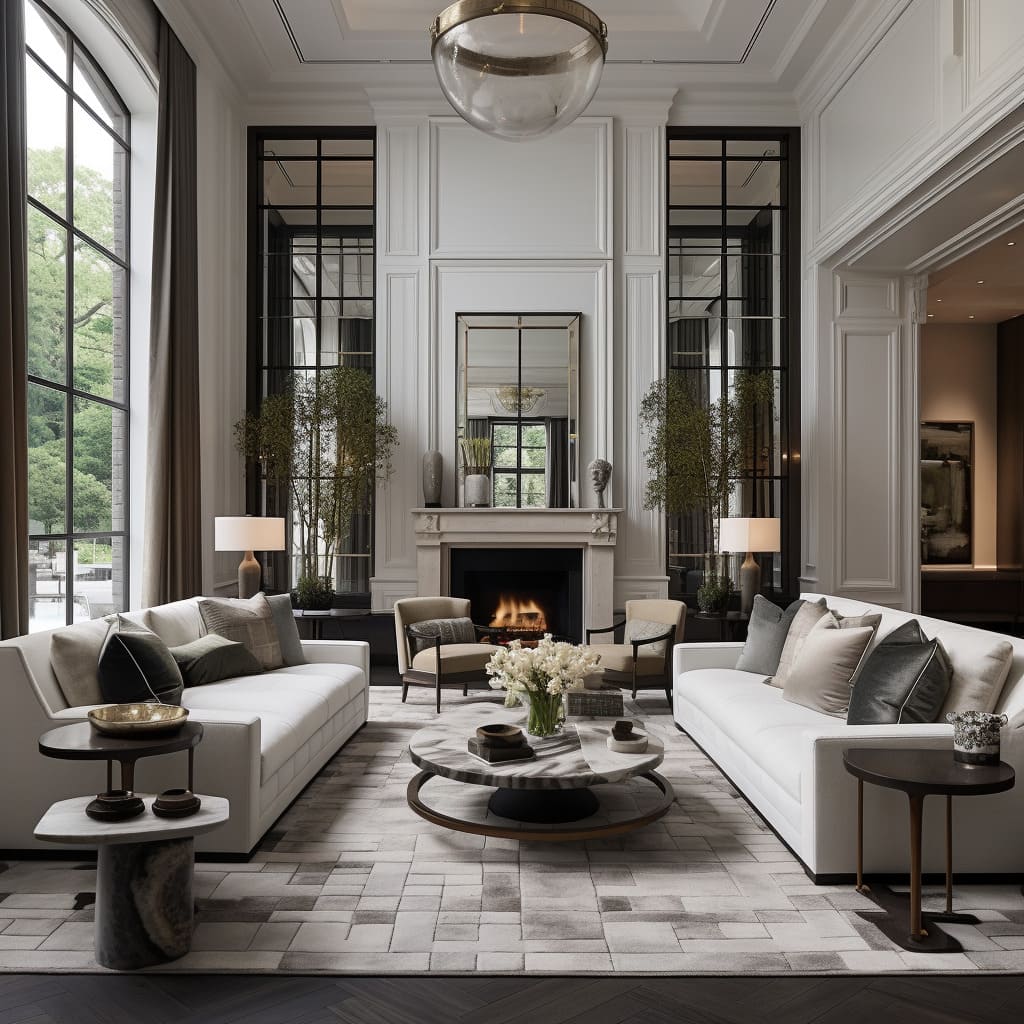In the ever-evolving landscape of interior design, one style consistently stands out for its ability to blend the best of the old and new: transitional design. This approach has steadily gained popularity among homeowners and designers alike, revered for its versatility and timeless appeal.
At its core, transitional design is about striking a perfect balance—melding the classic elegance of traditional styles with the sleek simplicity of contemporary aesthetics.
This article delves into the reasons behind the enduring popularity of transitional interior design, exploring how its unique combination of elements creates spaces that are not only aesthetically pleasing but also deeply functional and inviting.
The Appeal of Transitional Interior Design
Transitional style stands as a highly favored choice in interior design, adeptly merging the inviting coziness of traditional aesthetics with the sleek, minimalistic appeal of contemporary trends. This fusion creates a timeless, elegant ambiance that feels both comfortable and refined.
At the heart of the transitional design are several defining elements:
- Furniture in this style typically exhibits clean, straight lines, yet ensures comfort with plush, inviting cushions.
- A neutral color scheme dominates, with a preference for soft creams, warm beiges, and subtle grays, fostering a calm and serene environment.
- Traditional features, like a classic fireplace mantel, are effortlessly combined with contemporary pieces such as modern coffee tables and lighting fixtures.
- Accessories are used sparingly, maintaining a neat, uncluttered space that emphasizes simplicity and tidiness.
- The overall atmosphere of a transitional space is one of subtle sophistication. It strikes a perfect balance, blending elements often considered masculine and feminine, to create a space that is harmonious and inviting.
What’s Within Your Budget’s Range for Your Dream Design?
See how far your budget can stretch by entering your details and exploring the potential options.
[budget_renovation_calculator]
The Essence of Transitional Design: A Symphony of Style and Comfort
Transitional interior design captivates with its harmonious blend of elegance and comfort, achieved through meticulously selected furniture and decor within a serene color palette.
Furniture Dynamics: This style features a fusion of classic and modern furniture designs. Sofas and armchairs with clean lines and tailored upholstery in neutral shades offer a contemporary yet cozy appeal.
A wooden coffee table, minimalistic in design, anchors the space with its robust form and functional lower shelf for books or ornaments.
Color Palette: The color scheme is a sophisticated mix of cream, beige, and gray shades, creating a peaceful and welcoming atmosphere while allowing decor versatility.
Textiles: Textiles like curtains, cushions, and rugs introduce subtle patterns and textures, adding depth without overwhelming. A plush rug provides comfort underfoot, tying the seating area together.
Lighting: Balanced lighting comes from large windows and elegant floor and table lamps. These lamps, with timeless designs, emit a soft, warm glow, enhancing the room’s ambiance.
Decorative Accents: The use of minimal, yet impactful decorative accents like vases, bowls, and a sculptural piece on the coffee table, add character with their complementary colors and textures.
Architectural Elements: Key architectural features include a coffered ceiling, paneled walls, and a traditional fireplace, all painted crisp white for a fresh, modern feel.
Artwork: An abstract art piece over the mantel adds sophistication, with colors mirroring the room’s neutral palette.
Coffered Ceiling: The deep coffered ceiling design adds architectural sophistication, blending classical elements with contemporary crisp lines and white paint.
Wall Treatments and Paneling: Elegant wall paneling adds texture and depth, painted white to enhance the room’s brightness and airy feel, bridging traditional and modern design.
Fireplace: The classic mantel fireplace serves as a natural focal point, contrasting darkly against the room’s lighter tones, adding drama without overpowering.
Window Design: Large windows, framed with paneling matching the walls and dressed in subtly patterned curtains, add texture and allow control of natural light.
Symmetry: The symmetrical furniture arrangement contributes to the balanced and harmonious feel of the space.
Flooring: Light hardwood flooring reflects natural light, supporting the room’s open, inviting feel and complementing the neutral color palette.
Conclusion: The Timeless Appeal of Transitional Design
In conclusion, the popularity of transitional interior design can be attributed to its masterful blend of traditional warmth and contemporary minimalism. This style resonates with those who seek a balanced, inviting home environment that does not compromise on sophistication or comfort.
The careful selection of furniture, textiles, and color palettes creates spaces that are both functional and aesthetically pleasing. The use of neutral colors and subtle decorative elements ensures that these interiors remain timeless and adaptable to changing trends.
Architectural details like coffered ceilings and paneled walls add depth and character, while maintaining a modern edge. In essence, transitional design offers the best of both worlds, providing a harmonious, elegant, and welcoming setting that stands the test of time.
Its growing popularity is a testament to its ability to meet the diverse needs and preferences of homeowners, making it a perennial favorite in the world of interior design.


